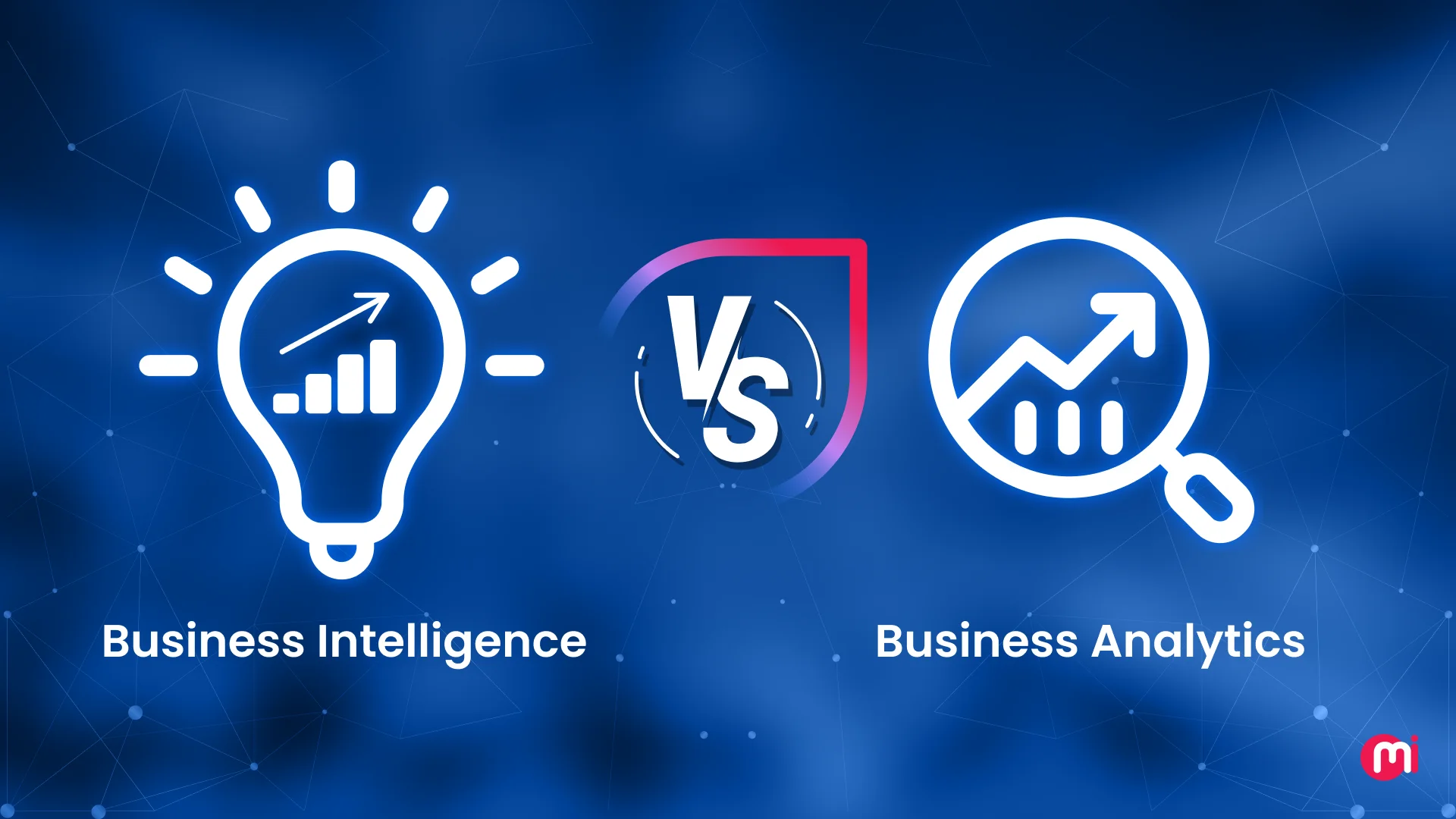Web3 in Fintech: How Financial Institutions Can Harness Decentralization
- Business
- July 20, 2023
The internet world is not as perfect as you see it. It sometimes becomes fragile to be hacked and regularized with many clauses that you might not want to comply with, especially in finance management.
After the introduction of digital transformation in the financial world, it has undergone many changes, including positive and negative. Due to this, transparency and top-notch security have become the biggest concerns for the industry.
Imagine a decentralized financial landscape that is not controlled by authorities but users. Won’t it be great to have full financial freedom and top notch security without worrying about privacy and theft?
Yes, it is! Luckily, it is no longer a dream but a reality, and all credit goes to Web 3.0, a groundbreaking technology that is revolutionizing finance as we know it.
Web3 has just started to take its baby steps but has done so many wonders in the financial world alone.
So, stay tuned to this blog as we are going to cover everything you need to know about web3 in fintech.
What is Web3 in Fintech?
As the name suggests web3, it’s the third version of the internet. According to reports, its market size is forecasted to reach $81.5 billion in 2030, at a CAGR of 43.7%.
The web3 landscape is a decentralized network, free from centralized authorities and regulatory bodies, providing users complete control over their digital data.
When defining web3 in fintech, web3 utilizes blockchain technology, smart contracts, cryptocurrency, dApps, and many other solutions, to make the financial processes completely decentralized, eliminating the involvement of intermediaries.
With its decentralized nature, web3 aims to create a more open, transparent, and inclusive financial ecosystem. Moreover, the adoption of web3 in finance makes it a successor of fiat money.
Why Should Financial Institutions Adopt the Web3 Revolution?
The concept of Web3 entered the technology market with a boom and started disrupting many industries with its decentralized nature it received by the support of blockchain technology, and the finance industry is no exception! Here are the reasons, or you can say, benefits financial institutions can reap out by adopting the web3 revolution:
Decentralized System
The reason we call Web 3.0 a decentralized internet is because it has no governing entities, which makes this more secure and free from internet censorship. It offers users with total data ownership, uptight privacy, and provides cost-effective financial services.
Enhanced Security
Web3 utilizes blockchain as its backbone, which offers better security features compared to traditional financial systems, they need to survive in this fragile internet world full of cybersecurity threats.
The decentralized web3 stores data into fragments across multiple nodes, each encoded with different encryption keys, which reduces the risk of security shield bridge attempts done by malicious actors.
The best part for financial sectors to invest in web3 technology is to protect the integrity of financial systems and build trust among app users.
Interoperability
Web3 promotes the use of open standards and protocols, and this standardization and enablement to decentralized exchanges (DEXs) – peer-to-peer trading. And it makes so many financial applications work in sync.
In short, web3 in a finance app results in a DeFi ecosystem that enables interoperability, so you can help to reduce app users’ efforts, time, and money.
Transparency
Web3 being the decentralized system, it gives total transparency and control over their financial records, enabling accountability and reduction in the risks of frauds.
So, financial institutions can leverage this feature to offer customers a clear view of their transaction history, fostering trust and improving user experience.
Cost Reduction
Web3 ecosystem, with the support of nascent digital technologies like AI/ML and blockchain, can automate various financial processes without the interference of intermediaries. This results in the reduction of transaction costs and enhancement of efficiency.
Innovation and Collaboration
With the adoption of web3 technology, you can foster a financial culture of innovation and collaboration. Also, you can implement decentralized applications to enhance financial services.
Wow, web3 has so many things to offer to the Finance sector on its platter! But the question is how will you adopt web3 for your fintech app to gain its maximum potential? Well, the next section is all about that!
What Web3 Solutions can the Fintech Industry Employ?
As we all know, the world of web3 technology is primarily driven by blockchain technology. Naturally, it will play a crucial role in the adoption of web3 in fintech. So, let’s explore the potential web3 use cases for Fintech solutions to employ and make your finance business future-ready:
Decentralized Finance (DeFi)
DeFi stands for Decentralized Finance which is the original form of the application of web3 in finance that unlocks the way we deal with finances. In short, DeFi came as the innovative replacement for the traditional finance processes, including lending and borrowing, trading, interest-earning on savings, and more.
In fact, the market size of DeFi was valued at $11.96 billion in 2021 and is estimated to cross $232.20 billion by 2030 at a CAGR of 42.6%.
Moreover, DeFi makes financial services available exclusively to certain institutions, professional traders, and business executives.
Apart from that, you can reap out benefits like easy and secure access to DeFi wallet services, flexibility in moving assets from one account to another, faster data update, and total transparency.
Stablecoins
As the name suggests, Stablecoins are a type of cryptocurrency designed to maintain stable value. They eliminate price volatility, with a 1:1 ratio, like the US dollar and the Euro.
If you see, there are three types of stablecoins:
- Fiat-collateralized stablecoins: These are backed by reserves of traditional fiat currencies. It includes Tether (USDT), USD Coin (USDC), and TrueUSD (TUSD).
- Crypto-collateralized stablecoins: Backed by traditional cryptocurrencies held as collateral, it includes DAI and Ethereum (ETH), along with sUSD backed by Synthetix Network Token (SNX).
- Algorithmic stablecoins: These are stabilized by algorithmic mechanisms and blockchain-based smart contracts without any collateral back support.
With stablecoins, you can avail fast and low-cost transactions, stable value, and seamless cryptocurrency exchanges with credibility and transparency.
Decentralized Exchange (DEXs)
Decentralized exchanges are kind of crypto exchanges through popular platforms like Coinbase and Binance but with more decentralization.
Unlike centralized exchanges that rely on intermediaries to facilitate transactions, DEXs allow users to trade directly with each other in a peer-to-peer manner without the need for a central authority or third-party involvement.
So, with the development of decentralized exchange platforms, you can enjoy advantages like total control and ownership, privacy and security, transparency, liquidity, accessibility, and censorship resistance.
Some popular decentralized exchange platforms are Uniswap, SushiSwap, PancakeSwap, and Balancer.
Derivatives
Derivatives in web3 are also known as decentralized derivatives or DeFi derivatives, which are in the form of financial contracts built upon blockchain technology. As a part of the decentralized internet, they inherit its transparent nature.
Plus, decentralized derivatives’ values are derived from an underlying asset or a reference rate. Further, these derivatives can be used for purposes like hedging against price volatility, speculation, and arbitrage.
One more thing you should know about decentralized derivatives is that they can be created in a public manner without any restrictions. But the fun part is they can be used as traditional derivatives.
Additionally, DeFi derivatives are traded and used by marketplaces and tools known as DeFi Derivative Protocols. Some of the popular DeFi derivative protocols include Synthetix, UMA, Opyn, dYdX, Perpetual, and Hegic.
Fund Management
Just like traditional fund management, web3 in finance has also enabled users to manage their financial assets and make their fund-based decisions. Here, fund management can include cash flow management, currency exchange, etc.
But when it comes to DeFi fund management, there are two types of decentralized fund management: Active and Passive.
Active fund management stands for the process where an entire team of fund investors makes decisions to invest in the market. In passive fund management, users mimic DeFi holdings to achieve certain results.
Decentralized Payments Systems/Apps
With the evolution of web3 in finance, the web3 contributors in fintech have also planned for making all traditional financial services in a decentralized manner. And it includes decentralized banking, and crypto wallets, which makes decentralized peer-to-peer payments possible with higher security, transparency, and accessibility.
With decentralized payment systems, you can make secure and automated payments just the way you do traditionally. So you do not need to put much effort into learning the decentralized system from scratch.
Decentralized Insurance
In the web3 world, the concept of insurance remains the same, with the only change of the inheritance that decentralized insurance gets from web3. To be more precise, in the DeFi world, decentralized insurance is taken to protect investments against risks of smart contract hacks, crypto wallet issues, attacks on DeFi protocols, etc.
Well, as the web3 world is backed by blockchain technology, there are rare chances of decentralized products getting hacked. However, taking precautions for the worst to come is way better than taking a detour.
In web3, decentralized insurance follows parametric insurance claim norms. It means, in order to claim the insurance money you need to meet each policy outline. And all of this is implemented in the form of smart contracts.
The best thing about going for a smart contract-based insurance process is that they are self-executing. So, when your decentralized transactions face any issues or processes that get into hurdles where financial risks are in place, your smart contract-based insurances will execute on their own while eliminating the scope for making false claims.
Regenerative Finance
Regenerative finance (ReFi) is a movement in the finance industry that aligns financial practices concerned with regeneration, sustainability, and social impact. The aim of going for ReFi development is to build a system to create a new meaning of finance rather than considering the one that focuses only on profit and externalizing social and environmental costs.
The ReFi movement focuses more on the field of impact investing, sustainable finance, and socially responsible investing. So, it can become a powerful tool to drive positive change, sustainability, regeneration, and social equity.

Technical Challenges In Implementing Web3 In Fintech Solutions
While web3 in finance can offer several benefits, it can also raise many challenges due to its top-most feature, decentralization. So, the challenges you can face when implementing web3 in fintech apps are as follows:
Scalability
As DeFi systems are built upon blockchain networks, they can face scalability limitations due to their complexity. So, the more transactions enter the network, the more complexity it can grow, and slower transaction processing time and boost transaction fees. So, it requires higher-level technical skills to achieve high throughput and scalability in your DeFi solutions.
Regulation and Compliance
Web3 technology is an ever-evolving one, and also, with its decentralized nature, it’s obvious for it to face regulatory challenges when working on DeFi. So, it’s not like it’s too hard, but yes a complex and time-consuming task to implement regulation and compliance.
Integration
Fintech systems are built with many integrations, such as payment gateways, KYC, and banking systems. And when it comes to integration in DeFi to integrate web3 and legacy financial systems, it can be a complex task to overcome interoperability and overcoming regulatory hurdles.
Apart from these technical challenges, you can face a bit of a challenge in spreading awareness of your DeFi solution and educating users to use your app efficiently.
How Can MindInventory Be Your Ally For Web3 In Fintech Solutions?
Adopting web3 technology in optimizing fintech solutions can be of great help to transform financial operations. It not only transforms financial operations in terms of efficiency but also in terms of transparency, security, and much more. So, employing decentralized financial solutions can help you govern your business free from mediatory regulatory parties.
However, to build cutting-edge DeFi solutions, you need assistance from web3 industry experts. And that’s where MindInventory comes into the picture that will help you develop your dream app from app conceptualization to research to design to development with post-delivery support.
So, get in touch with our team and share your web3-based fintech app development idea to get the best-fit solution with its cost and time estimation.
FAQs on Web3 in Finance
The cost of developing a web3-based fintech app can vary depending on factors such as the type of technology you use, app design and development complexity – including features and functionalities, the region of the web3 development team you choose, the experience of the team, and a lot more.
By adopting DeFi solutions, you can overcome financial challenges, like interference of mediators, limited access, inefficiency, lack of interoperability, lack of transparency, single points of failure, corruption, and much more, and embrace a decentralized and transparent culture.
Seeing the booming effect that web3 brought in the financial landscape, it holds significant potential for transforming the financial industry through DeFi expansion, tokenization of real-world assets, enhanced security and data privacy, decentralized identity & reputation systems, and integration with traditional finance.













